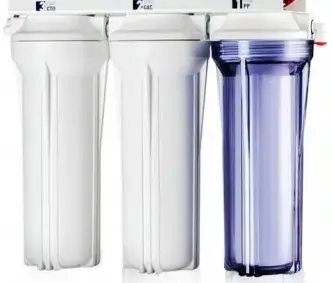Heavy Metal Contamination in Tap Water: What You Need to Know
Heavy metal contamination is a growing concern in many parts of the world, affecting the safety of drinking water and posing serious health risks. Harmful metals such as lead, arsenic, mercury, and cadmium can find their way into water supplies through various sources, including industrial waste, naturally occurring deposits in the earth, and outdated plumbing systems. Once present in tap water, these contaminants can accumulate in the body over time, leading to a range of health issues.
What is Heavy Metal Contamination and How Does It Happen?
Heavy metal contamination refers to the presence of toxic metals like lead, mercury, arsenic, cadmium, and chromium in water sources. These metals can enter water supplies through:
- Industrial waste: Factories and mining operations release heavy metals into nearby water bodies.
- Agricultural runoff: Pesticides and fertilizers containing heavy metals can seep into groundwater.
- Old plumbing systems: Corroded pipes, especially those made of lead, can leach metals into tap water.
- Natural deposits: Some heavy metals, like arsenic, occur naturally in soil and rocks, contaminating groundwater over time.

Why is Heavy Metal Contamination Significant? Health Effects and Symptoms
Heavy metals are toxic even at low concentrations and can accumulate in the body over time, leading to severe health issues. Common side effects include:
- Lead: Neurological damage, developmental delays in children, and kidney problems.
- Mercury: Impaired brain function, tremors, and damage to the nervous system.
- Arsenic: Skin lesions, cancer, and cardiovascular diseases.
- Cadmium: Kidney damage and bone degeneration.
Symptoms of heavy metal poisoning may include fatigue, headaches, nausea, muscle pain, and cognitive impairments.
Countries Where Heavy Metal Contamination is Most Prevalent
Heavy metal contamination is a global issue, but some regions are more severely affected:
- Bangladesh and India: Arsenic contamination in groundwater is widespread due to natural geological deposits.
- United States: Lead contamination is common in older cities with outdated plumbing systems, such as Flint, Michigan.
- China: Industrial pollution has led to high levels of heavy metals like cadmium and mercury in water sources.
- Mexico: Mining activities have contaminated water with lead and arsenic in several regions.
How to Detect and Safely Filter Out Heavy Metals
Heavy metals in tap water are invisible to the naked eye and often tasteless, making them difficult to detect without proper testing. While some areas have water quality reports available, individuals concerned about contamination should take proactive steps to test and filter their water.
Detection
- Water Testing Kits: Home testing kits can detect common heavy metals like lead and arsenic.
- Professional Testing: Send a water sample to a certified laboratory for a comprehensive analysis.
Filtration
- Reverse Osmosis (RO): Highly effective at removing heavy metals, including lead, arsenic, and cadmium.
- Activated Carbon Filters: Good for removing organic compounds but may require additional technologies for heavy metals.
- Distillation: Boils water and collects steam, leaving heavy metals behind.
- Ion Exchange Filters: Swaps heavy metal ions with harmless ones.
It's important to note that boiling water or using purification tablets will not remove or neutralize heavy metals. These methods are effective for killing bacteria and viruses but do not address chemical contaminants like lead, mercury, or arsenic.
Regular Maintenance
If you’re using a filtration system, ensure it’s regularly maintained to keep it functioning effectively.
